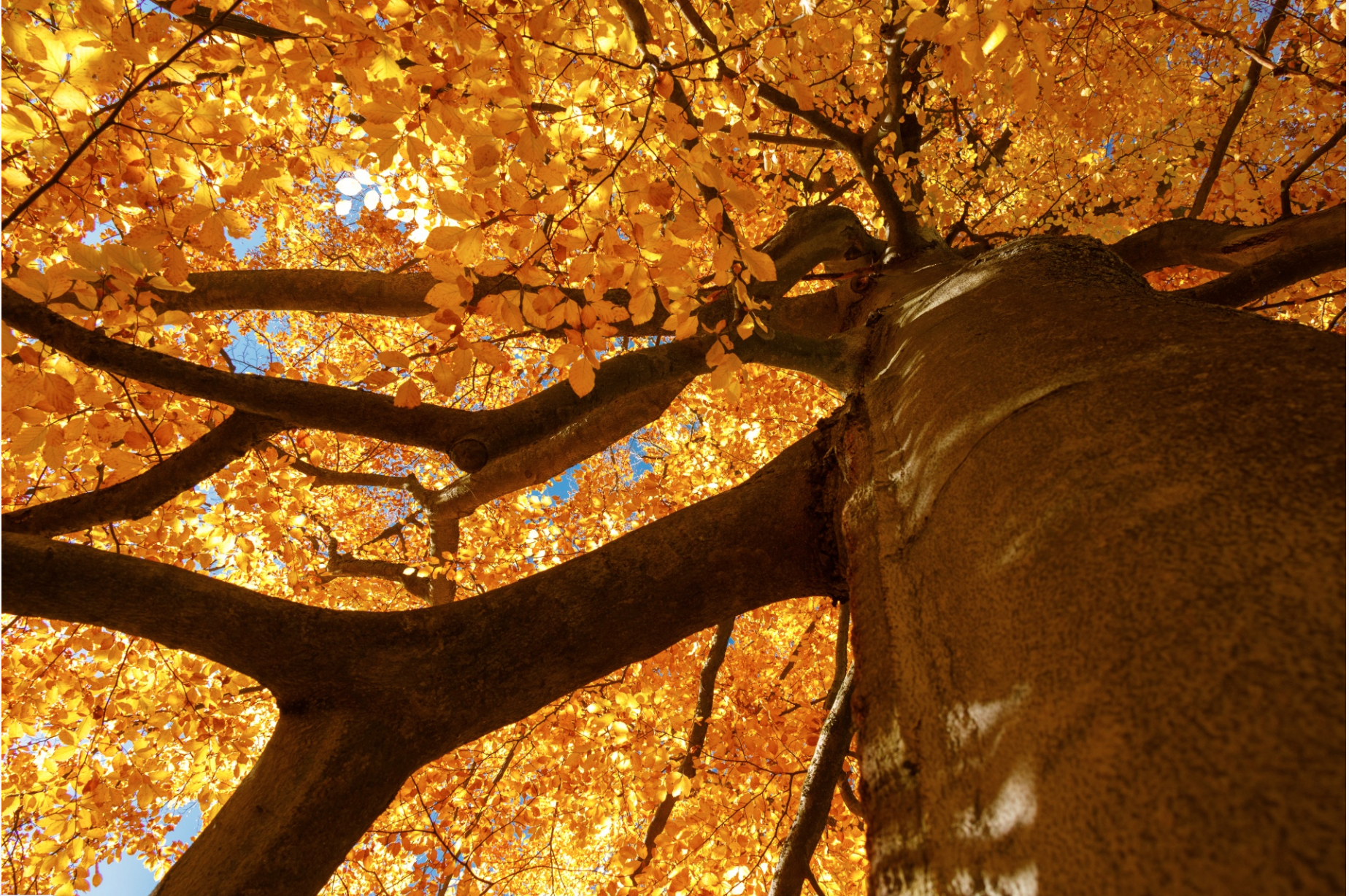Teach This Poem, though developed with a classroom in mind, can be easily adapted for remote-learning, hybrid-learning models, or in-person classes. Please see our suggestions for how to adapt this lesson for remote or blended learning. We have also noted suggestions when applicable and will continue to add to these suggestions online.
The following activities and questions are designed to help your students use their noticing skills to move through the poem and develop their thinking about its meaning with confidence, using what they’ve noticed as evidence for their interpretations. Read more about the framework upon which these activities are based.
- Warm-up: (think-pair-share) What comes to mind when you hear this phrase: “The forest is its own thanksgiving?” Share what you discussed with your partner with the class.
- Before Reading the Poem: (Teachers, set up a virtual/printed gallery walk using the different images of beech trees. Or, feel free to use one of the images.) Look closely at the images of beech trees here, here, and here. What do you notice? What questions might you have about these trees?
- Reading the Poem: Now, silently read the poem “Beeches” by David St. John. What do you notice about the poem? Note any words or phrases that stand out to you or any questions you might have.
- Listening to the Poem (Enlist two volunteers to read the poem aloud): Listen as the poem is read aloud twice, and write down any additional words and phrases that stand out to you. Or, you might opt to listen to the poet read the poem.
- Small-group Discussion: Share what you noticed about the poem with a small group of students. Based on the details you just shared with your small group and the resources from the beginning of class, what do you think now of the line “The forest is its own thanksgiving?”
- Whole-class Discussion: How would you describe the speaker and the speaker’s relationship to nature? What do you make of the last four lines of the poem: “To say I miss you is to say almost nothing / To say the forest is the sanctuary of ghosts / Is only the first step of my own giving way— / Not the giving up—just the old giving thanks”?
- Extension for Grades 7-8: Read poems about gratitude, family, food, home and giving thanks. Create a quote museum where you illustrate/draw your favorite quotes. Share your visual piece with your class and discuss what you notice.
- Extension for Grades 9-12: Create your own poem using one of the lines from the poem: “The forest is its own thanksgiving,” or “peace is where you find it.” Or, create your own poem about Thanksgiving, nostalgia, or anything on your mind. Share your poem with your classmates.
“In his poem ‘América,’ Richard Blanco brings us into the experience of Thanksgiving celebrated by an extended Cuban American family, making us think about the many ways to be an American today. When your students add the experience of Thanksgiving in their families, the conversation around the poem becomes even more complex.” Teach the poem “América” with this lesson plan.

 Look closely at the images of beech trees
Look closely at the images of beech trees